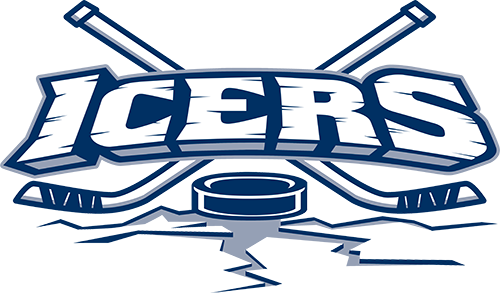Hockey 101
the players
Goaltender: The goalie's primary task is simple - keep the puck our of their own net. Offensively, they might start their team down the ice with a pass, but seldom do they leave the net.
Defenceman: These players try to stop the incoming play at their own blue line. They try to break up passes, block shots, cover opposing forwards (center and wings) and clear the puck from in front of their own goal. Offensively, they get the puck to their forwards and follow the play into the attacking zone, positioning themselves just inside their opponent’s blue line at the "points." While starting on D, anyone can jump up in the play and score and D are often encouraged to start the rush either up to Wings / Center or escaping the zone themselves.
Center: The quarterback on the ice, the center leads the play by taking face offs and carrying the puck on offense. He exchanges passes with his wings to steer the play toward the opposing goal. On defense, they try to disrupt a play before it gets on their team’s side of the ice and often act as a third defenceman. Center have slightly more responsibility than wings in this way.
Wings: The wings team with the center on the attack to set up shots on goal. Defensively, they attempt to break up plays by their counterparts and upset shot attempts. They are to forecheck, which is to attack the puck in the other team's zone, as well as keep the play toward the wall and away from the middle of the ice.
Officials
Referee: The referee supervises the game, calls the penalties, determines if goals are scored and handles faceoffs at center ice at the start of each period. In youth hockey they also do the job of the linesman.
Linesmen: One or Two are used at older levels. They call offside, offside pass, icing and handle all faceoffs not occurring at center ice. They do not call penalties, but can recommend to the referee that a penalty be called.
Official Scorer: Writes down who is credited with goals and assists as well as what time they occurred when told by the Referee. They also write down the penalties.
Penalty Box monitor: Youth sports also have a penalty box monitor. This is considered an official of the game. They open and close the penalty door and are not to allow the player out until the penalty comes off the clock.
The penalties
A team plays shorthanded when one or more of its players is charged with a penalty. However, no team is forced to play more than two players below full strength (six) at any time. If a third penalty is assessed to the same team, it is suspended until the first penalty expires. When a penalty is called on a goalie, a teammate serves his time in the penalty box.
Minor Penalty: Two minutes (scaled for 10/12U games) - Called for boarding, charging, cross-checking, elbowing, holding, hooking, high-sticking, interference, roughing, slashing, spearing, tripping and unsportsmanlike conduct.
Major Penalty: Five minutes - Called for fighting or when minor penalties are committed with deliberate intent to injure. Major penalties for slashing, spearing, high-sticking, butt-ending and cross-checking carry automatic game misconducts.
Misconduct: Ten minutes - Called for various forms of unsportsmanlike behavior or when a player incurs a second major penalty in a game. This is a penalty against an individual and not a team.
Penalty Shot: A free shot, unopposed except for the goalie, given to a player who is illegally impeded from behind when in possession of the puck with no opponent between him and the goal except the goalie. The team which commits the offense is not penalized beyond the penalty shot, whether it succeeds or not.
Delayed Penalty: The whistle is delayed until the penalized team regains possession of the puck.
referee signals
Click below for standard referee signals and a brief description of the infraction.
Oops!
You have unsaved elements
Please save or cancel the pending changes to the elements within your page and then try saving again.
